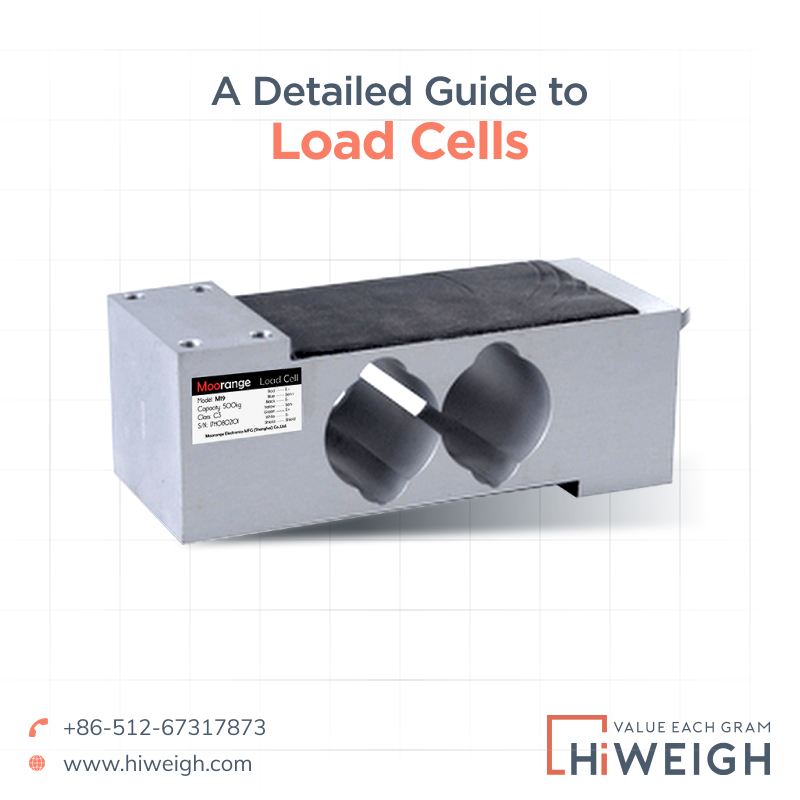To be curious about the weight of an object is something very common. But have you ever wondered about the change in weight over time? Ever wanted to know the presence of something by measuring the load or strain on the surface? Well, this post is an attempt to throw light on this subject and offer a guide to the world of load cells and their types.



What is a load cell?
Load cells are one of the most significant parts of digital weighing scales and devices. It is also called a sensor or transducer that is responsible for transforming a force acting on it into a measurable electronic signal. It is generally utilised as a part of balances and weighing scales because they offer very accurate measurements and are non-intrusive. That is why the demand for China load cell is very high in the industrial and automotive sectors.
Origin of load cell
Traces of load cells can be found in the mid-19th century. It became popular when Sir Charles Wheatstone made the “Wheatstone Bridge” by making a bridge circuit that had the power to calculate electrical resistances. The device was commonly used in laboratories because it helped measure resistance that was generated in strain gauges.
Over time, the bonded resistance wire strain gauge was made in the mid-20th century. Also, it could be adapted during the usage of mechanical scales or stand-alone cells with the Wheatstone bridge. Consequently, it was being used as a sensor that can calculate dynamic and static strains. Moreover, because of their compact size and easy-to-use features, load cells have continued to evolve over time. Besides, now it can be used to calculate several amounts associated with strain including acceleration, force, torque, and pressure.
Functioning of load cells
The process of calculating output is different in different types of load cells. When it comes to calculating output, the hydraulic load cells depend on the force of the internal filling fluid. On the other hand, a strain gauge load cell transforms force pressure into calculable output with the help of a gauge that is connected to beams or the load cell system. If pressure is given on the load cell, the system distorts as per the weight put on the device. Consequently, it leads to the system’s electrical resistance that can be calculated.
Types of load cells
China load cells have been designed to calculate electrical output in several ways to meet particular weighing requirements. Here are some of the popular load cells that are mostly used in contemporary times.
1. Strain gauge
It’s a widely used China load cell that is based on a spring mechanism where a strain gauge is installed.
2. Pancake
It is known for its tension and low-profile compression load cells that have a big surface area to absorb the shock of loads. It is generally utilised in the automotive, material testing, and industrial sectors.
3. S type
S type is also referred to as Z beam or S beam load cells. It comes with a small S-shaped design which is the reason, it is called S-shaped. They are usually utilised for calculating suspended loads.
4. Shear beam
This is a load cell that is known for its rectangle shape that generally has double retaining bolts on one side for additional support and load cells on the other. It is considered best for industrial environments as well as for compression force testing requirements.
5. Double-ended
In comparison to the normal shear beam, the double-ended load cells have support on both sides and the load is put in the middle of the load cell.
6. Single point
Also known as Platform load cells, it supports the building of a machine or weighing scale via a single load cell. You can find them in most small to medium size platform scales.
7. Button
These are small compression strain gauges that are considered ideal for working in places with small spaces. In this load cell, the bottom is generally bolted while the pressure is given on the button on the top.
8. Bending beam
A widely used load cell, the bending beam is a versatile small device that is best for use in areas with little space. They are considered mainly for commercial measurement needs.
9. Hydraulic
It’s a kind of load cell that calculates weight in the form of variation in force. Once the load is positioned on the load cell, it can produce an additional force that can be calculated by an electrical transducer.
Conclusion
Finally, if you buy a load cell, always ensure to buy it from a reputed company. Make sure to check their reviews and ratings before making any decision.
